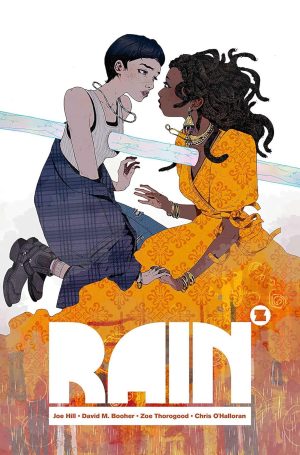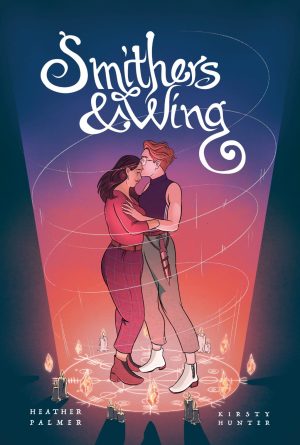Review by Colin Credle
In this young adult graphic novel everyone in a contemporary rural Maine is defined by their illness, their victimhood or the degree to which they don’t conform to societal norms. This might speak to a certain young adult audience. The challenge is to navigate through the terminology, the ideology and the world view informed by Sarah Winifred Searle’s rather specific, subjective perspective.
Searle grew up in rural Maine, but now lives in sunny Australia. Much of the graphic novel is spent explaining the experience of a vegan vampire and the emotional framework behind accepting those who cannot control their victimhood. However, victims do have agency in how they deal with their victimhood, and The Sweetness Between Us seems to promote relishing the validation and uniqueness that comes with it. Searle dabbles with the personal growth of controlling your victimhood without fully committing, and along the way, there is an interesting primer on diabetes.
Perley Culpeper is a Jewish young man (who goes by “they, them”) illustrated to look gender non-specific. After being diagnosed with diabetes, Perley took time off from high school to recover, adjust, learn about diabetes and attend Yom Kippur with grandparents. Amandine Lavigne is a vegan who turned into a vampire after a traumatic car accident. Apparently, some of Amandine’s family members are also vampires. Recovering from the accident and adjusting to having to consume human blood, Amandine missed a lot of school. Perley and Amandine meet upon their return to school in the room of tutor Mx. V. Bythesea (get it? “by- the-sea?”).
The fluid pronouns can be confusing, which is challenging to comprehend for a reader not well versed in the author’s switching of pronouns based on identity. Deciphering how each character identifies themselves is not immediately apparent, may involve revisiting clues for each one and requires some effort. Unfortunately, understanding how they identify themselves is necessary in understanding their challenges and views, but this isn’t easily done. A great deal of panel space is spent explaining the identity experiences of each character with long, bloated word balloons. It doesn’t take long for this excess of explanation to overshadow any story worth following.
The artwork is bulky, featureless and oddly flat. There are graphic novels that succeed with simple illustrations thanks to gifted storytelling, dialogue and a synergy and flow between image and character. Sweetness Between Us is not such a graphic novel as the art presents a stilted pace slowing it down.
The overbearing explanations, justifications and maudlin emoting drown out, interrupt and slow the plot so much it is reduced to a long diatribe on the virtues of being afflicted or being a vegan vampire, making Sweetness Between Us quite literally forgettable. Once you work through the explanations and lecturing you have to revisit and reconsider the point of the story being told. This happens often enough that it prevents caring about the characters. Searle invites us on a journey, then interrupts the story to explain each and every detail so much that the characters are reduced to vacuous props and we forget why we are even here in the first place.





